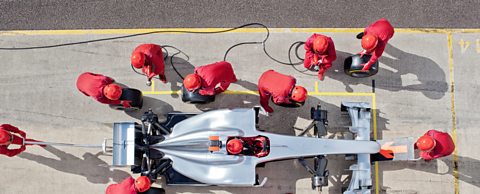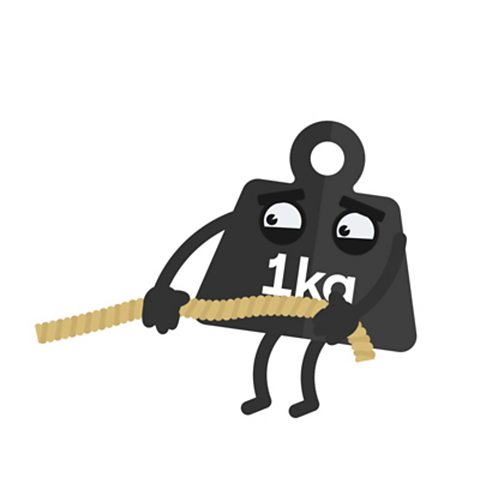
If you dropped a feather and a hammer from the same height, which would fall faster?
It may seem obvious at first β but is it?
Let's find out!
The theories
Humans have been pondering this for a while. Click on the images below to see how our understanding has changed.
On the Moon: As it happened!
At the end of the last Apollo 15 Moon walk, Commander David Scott performed a live demonstration for the television cameras. As over 600 million people watched on live TV, he held out a geologic hammer and a feather and dropped them at the same time.
Footage courtesy of NASA
Spaceman:
Well, in my left hand, I have a feather. In my right hand, a hammer. And I guess one of the reasons that we got here today was because of the gentleman named, Galileo a long time ago, and made a rather significant discovery about falling objects and gravity fields. And we thought that, where would be a better place to confirm his findings than on the moon? And so, we thought we would try it here for you, as the feather happens to be appropriately a falcon feather for our Falcon. And I'll drop the two of them here, and hopefully they'll hit the ground at the same time. How about that? Mr Galileo was correct in his findings.
So why do feathers usually fall slowly?
Air resistance
On Earth we have plenty of air to breathe. This air causes friction with objects as they fall through it, called air resistance, which can slow them down as they fall. Air resistance affects different shapes differently.
Because the Apollo crew were essentially in a vacuum, there was no air resistance and the feather fell at the same rate as the hammer.
This is exactly what Galileo had concluded hundreds of years before: all objects released together fall at the same rate regardless of mass. The result was predicted by well-established theory, but was reassuring for the Apollo crew as their homeward journey from the Moon depended on this theory being correct!

Should a bumblebee be able to fly?
With its big furry body, tiny wings and round shape, the bumblebee is unlike many of the other things we see flying in our skies. It doesnβt have a sleek shape to minimise air resistance, as we would expect of an aeroplane. Nor does it beat its wings like a bird.
You may have heard it said that, scientifically, bumblebees shouldnβt be able to fly. But is this true? After all, the bumblebee continues to fly β so science must have the answers!

Lift - the force of flight
The force that opposes gravity and allows objects to fly is called lift. Lift is usually caused by the shape of the wing and the way that air passes over and under the wing. Wings have a shape which scientists and engineers call an aerofoil β it is angled upwards, rounded on the front edge, curves over its surface and then tails off. Aeroplane and bird wings usually have this shape. When an aerofoil wing shape cuts through air at a high enough speed, the wing lifts into the sky.
This is because the shape of the wing causes air to move around it in a particular way. When a wing pushes through air at speed, the air strikes the bottom of the wing and is directed around the wing shape in a way that causes the air below the wing to push it upwards. A winged object takes flight when this upwards push exceeds the downwards pull of the objectβs weight.
Flying things
Now we know about wings and lift, let's look at how different flying things take to the skies.
Click the images below to find out more about their methods of flight.
In the 17th Century, a scientist called Isaac Newton investigated the way things move and came up with three laws of motion. His laws are still very important and examples can be found everywhere we look.
Click on the picture below to find out more.
Magnets: Five amazing things!
You may not realise it, but magnets are all around us - and even underneath us! Click on the image below to find out more.

How do you make something go really, really fast?
If you want to go really fast, you have to know about friction!
Friction is the force created when two objects move over each other; it always works in the opposite direction of a moving object and slows everything down. Your feet moving on the ground create friction, but moving through air and water also creates friction.
Every time you move you are fighting against friction slowing you down. The less friction there is to work against, the easier it is to move and the faster you can go! So how do you reduce it?
Super fast things
Luckily, we know a few ways to reduce friction to by changing the properties of the materials we use and the shapes of the objects we want to go fast.
Click on the images below to find out more.

Forces Live Lesson
You'll notice that a lot of fast things are shaped in a way that reduces the effects of friction, air resistance and water resistance. The science of making things go fast was explored in our very special Terrific Scientific Live Lesson!
Filmed live at the McLaren Technology Centre, this programme explores forces including air resistance and friction. It is now available to watch on demand at the link below.


